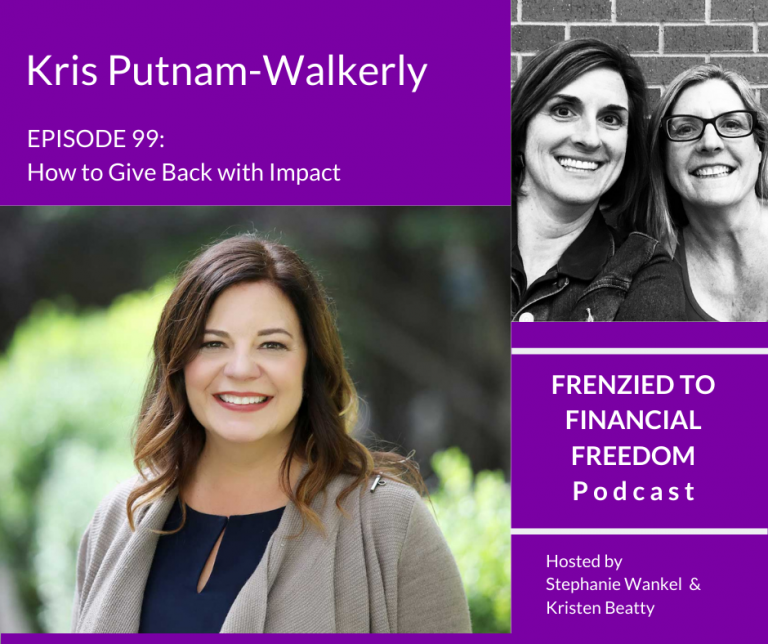Many funders fail at this. Are you one of them?
In my last newsletter of 2020, Don’t Let Your New Strategy Fail in 2021, I shared five reasons why strategic plans rarely get implemented. I also promised to share with you 10 steps to implement anything quickly– whether it’s creating a new funding initiative, implementing a new strategy, or launching your communications plan.
In my 20 years of experience advising philanthropists of all sizes and types, few take the first step and many never cross the finish line. Are you one of them?
Take this simple test! Read all the steps below. Think about the last big thing you tried to implement and give yourself a point for each step you took. Be honest!
For the purpose of this list, let’s assume that the big thing you want to implement is your strategic plan:
Step 1. Choose the top three or four priorities that must be addressed quickly, or your strategy will fail. Many funders skip this step, but it’s the most important. Brainstorm the top three priorities — the things that absolutely need to happen next — in order to implement your strategy. I’m talking about the top priorities for your entire operation (whether you are a donor advised fund, corporate giving program, or an association), not each individual’s own priorities. If you don’t have clarity about your top implementation priorities, your strategic plan either won’t get implemented or it will take three times as long. It’s that simple.
Step 2. Assign priority champions. For each priority, pick a person who will be responsible for it. This person does not need to do everything, but they need to make sure a specific priority happens and they need to be held accountable.
Step 3. Tell everyone. Every single person at every level of your organization, be it program officers, finance directors, family members, or the receptionist, need to know the top implementation priorities. Write them down on easel paper and hang up copies in the conference room, in the hallways, and in the lunch room. Everyone needs to keep these priorities top of mind.
Step 4. Give each priority its own punch list. Ask priority champions to create a list of the top 5-10 most important things that need to happen next for their priority. For each item add a deadline. Keep it simple. It needn’t be a full-blown work plan. In fact, at this stage such a plan would be unrealistic and slow things down.
Step 5. Help everyone understand their role. Other than your priority champions, who else needs to be involved? Tackling a new issue might involve your team working together in new ways. For example, your director of charitable giving might be accountable for your top priority to dramatically speed up all grantmaking activities, but she needs to involve the grants manager, the finance team, the communications director, the receptionist, and so forth.
Step 6. Review progress with your entire team. Ask priority champions to regularly share progress with everyone. Staff meetings are a great place to do this. Top implementation priorities should be the first agenda item at every meeting. Priority champions bring their lists and update everyone on progress. That holds them accountable, and lets your team troubleshoot and solve problems together. This should happen at least bi-weekly to start.
Step 7. Identify supporters and resisters. Strategy implementation involves change. Some on your team will enthusiastically embrace the change. Harness their enthusiasm and engage their leadership. Some will resist. Help them see how it’s in their self-interest to get on board. Sometimes your strongest resisters can become your staunchest allies.
Step 8. Move quickly. The quicker you can begin implementing your strategic plan, the more momentum you will gain. The more momentum you gain, the quicker everyone gets on board (including the resisters) and the faster you achieve results. Think of implementation as a series of short sprints, not a marathon.
Step 9. Make hard decisions. Sometimes, the new strategy is simply not the right fit for members of your team. There might be people who can’t or don’t want to get on board. Successful strategy implementation might call for a parting of ways.
Step 10. Celebrate success. Just as you share the top priorities and implementation progress with your whole team, regularly share successes. These can be big accomplishments (we created our first communications plan!), wonky wins (woo-hoo, we re-coded our grants management system!), and tiny victories (grants under $5,000 now only need one signature instead of four!). Everyone will appreciate being appreciated.
Score yourself! How many steps did you take when you tried to implement your “big thing”? If it was 9-10 please call me as I would love to share your story as an example of successful strategy implementation (seriously, call me!). If it was zero or only a handful, don’t despair. Trust me, you are not alone. And if you never did the first step, regardless of all the other ones, you probably didn’t get very far. Everyone on your team being “busy” does not equate to “aligned!”
Strategy implementation isn’t that hard, yet most funders don’t do it well or quickly. You can do this on your own, but it’s like learning how to ski. Yes, you can read about how to ski in a newsletter, but chances are you will learn to ski faster and fall down less often with a ski instructor by your side!
That’s where I can help. I serve as a trusted advisor and implementation navigator to many foundations, ultra-high net worth donors, and Fortune 500 companies, to help them gain alignment and rapidly implement their next big thing.
If you need help, let’s talk. Schedule a call with me, we can talk about your situation, and I can share some options. Let’s get you implementing quickly so you can get on with changing the world!
If you need help implementing any of these ideas, let’s talk!
You can email me, call me at +1.800.598.2102, or schedule a call.
Navigate the unknown with confidence!
This free download will help you create a powerful giving plan in radically uncertain times.
So many funders I talk to lately are feeling overwhelmed (and exhausted) because conditions keep changing and it’s hard to plan for an unknown future. But while the future is uncertain, we don’t have to be. You can’t afford to “wait and see.” With these practical how-tos, you can pivot with purpose!









